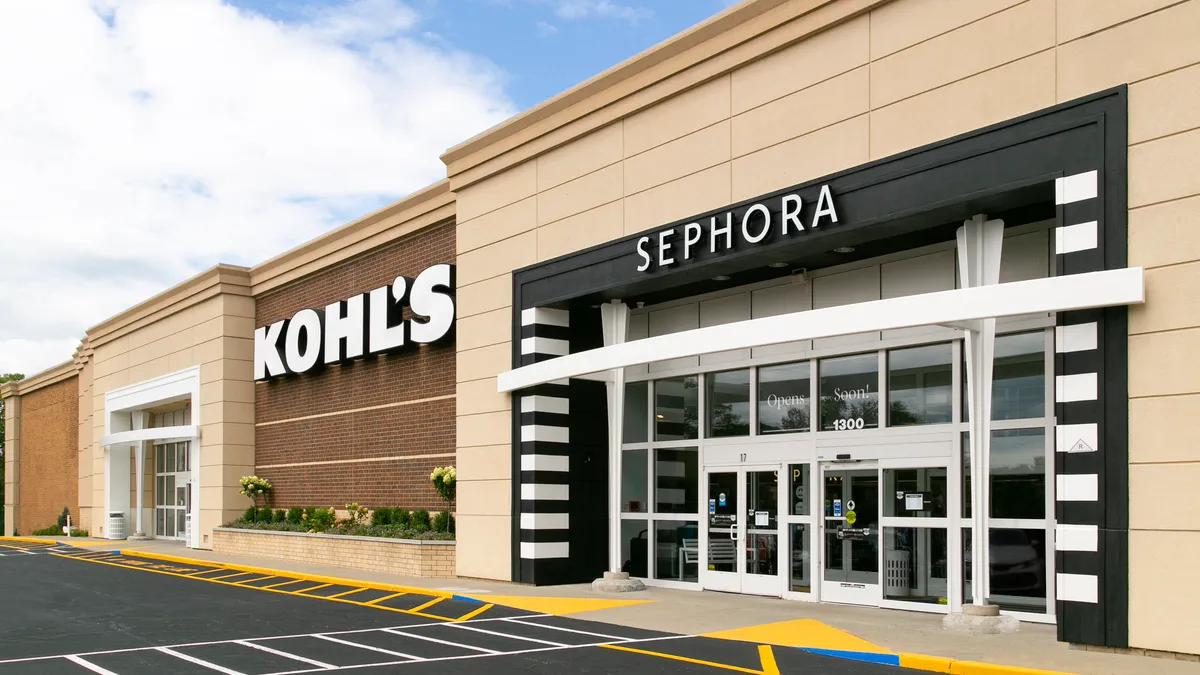Dive Brief:
-
Kohl’s on Wednesday said Q1 net sales fell 3.3% year over year to $3.4 billion, with comps down 4.3%. Inventory declined 6% from a year ago.
-
Gross margin expanded by 67 basis points to 39%, and net income remained flat at $14 million, according to a filing with the Securities and Exchange Commission.
-
The department store opened two stores in the period — one of which was a relocation — and plans another five this year. CEO Tom Kingsbury told analysts Wednesday that all stores are profitable and the company has no closure plans.
Dive Insight:
Like J.C. Penney before it, Kohl’s is banking on its Sephora partnership to help in its turnaround. The department store will end the year with a Sephora presence in more than 900 of its locations, including more than 850 of its 2,500-square-foot stores and 50 of its “hyperlocal” 750-square-foot shops, Kingsbury said.
Thanks to the partnership, Kohl’s Q1 total beauty sales rose 150%, and it’s gaining market share in the category, he told analysts during a conference call. “We are bringing in new customers and they are shopping at more than twice the frequency of our average customer,” he said. “Our investments to support this partnership are yielding the outcomes we intended.”
But the enthusiasm may be misplaced, according to GlobalData Managing Director Neil Saunders, who sees the tie-up benefiting the beauty retailer more than Kohl’s. Rising beauty sales are to be expected in what is a rapidly growing market; similarly, traffic to Sephora is unsurprising given that it’s a “very popular destination thanks to its strong proposition,” Saunders said in emailed comments.
“Kohl’s talks extensively about its partnership with Sephora but, while we recognize the benefits, we don’t think this is quite the victory management assume it is,” he said.“This is mostly because Sephora is masking an even sharper decline in the core Kohl’s business. Moreover, although management says that Sephora is driving footfall, we do not believe it is driving spending in the rest of the store.”
Kingsbury acknowledged that the retailer’s “middle income customer has been squeezed overall” but said Kohl’s can continue to capture business if “we consistently deliver strong values to the customer.” This is the project for the rest of the year, and a difficult one, analysts said. In Q1, the company “offered some modestly promising signs,” including a reaffirmation of its outlook, its profit and inventory management, according to Insider Intelligence analyst Zak Stambor.
“The company's overreliance on the brand equity of other retailers (Amazon and Sephora) to boost traffic and sales is not a viable approach for sustainable growth,” Stambor also said. “To engage consumers and encourage visits to its website and stores, Kohl's needs to establish a compelling value proposition and a distinct perspective.”
Kohl’s began taking Amazon returns in 2017, and executives have also touted that partnership’s success in driving traffic and sales.















